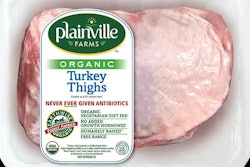
Sanderson Farms reported a net loss of $17.8 million for the first quarter of fiscal year 2019, a sharp contrast from the $51.2 net income for the same quarter of the 2018 fiscal year.
The quarter ended on January 31, and the financial results were announced on February 26.
“Our results for the first quarter reflect continued challenging market conditions with significantly lower market prices for boneless breast meat produced at our big bird deboning plants compared with last year’s first quarter,” said
Joe F. Sanderson, Jr., chairman and chief executive officer of
“However, average prices for tray pack products sold to retail grocery store customers were higher both sequentially and when compared with the same period a year ago, and prices continue to reflect a good supply and demand balance. Demand and prices for jumbo wings strengthened seasonally during the quarter, but market prices still averaged below last year’s first quarter. Despite the challenging market price compared with last year’s first quarter, market prices for boneless breast meat rose from record lows during January and are now higher than this time a year ago.”
Overall market prices for poultry products were lower during the first quarter compared with the same period last year. Compared with the first fiscal quarter of 2018, the average prices of the company’s retail tray pack products were approximately 1.4 percent higher, boneless breast meat prices were approximately 7.6 percent lower, bulk leg quarter prices decreased by approximately 23.7 percent, and jumbo wing prices were lower by 4.7 percent. The company’s average feed cost per pound of poultry products processed was flat compared with the first quarter of fiscal 2018, and prices paid during the quarter for corn and soybean meal, the company’s primary feed ingredients, increased 3.3 percent and decreased 0.2 percent, respectively, compared with the first quarter of fiscal 2018.
“Good corn and soybean crops harvested in
Also factored in the contrast between the first quarter of fiscal year 2018 and fiscal year 2019 was a one-time non-cash tax benefit of
Net sales for the first quarter of fiscal year 2019 were
New poultry complex begins operations
“Operations at our new

















